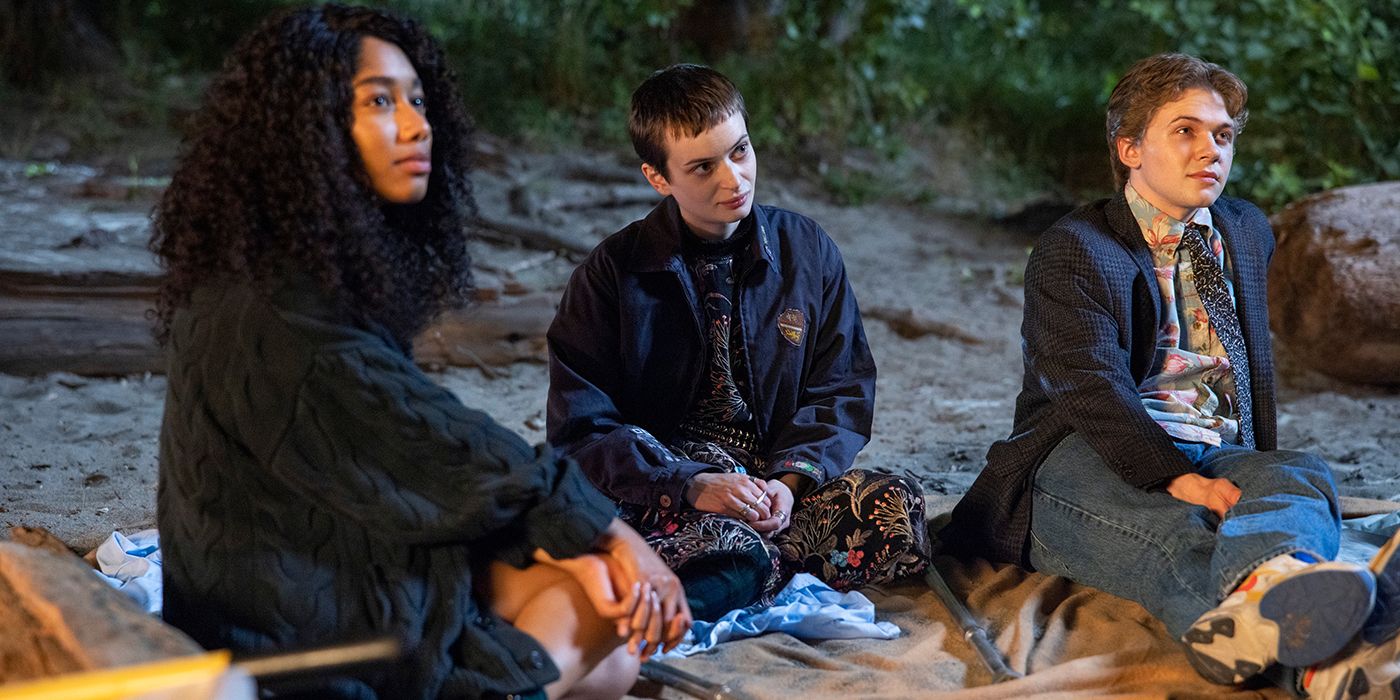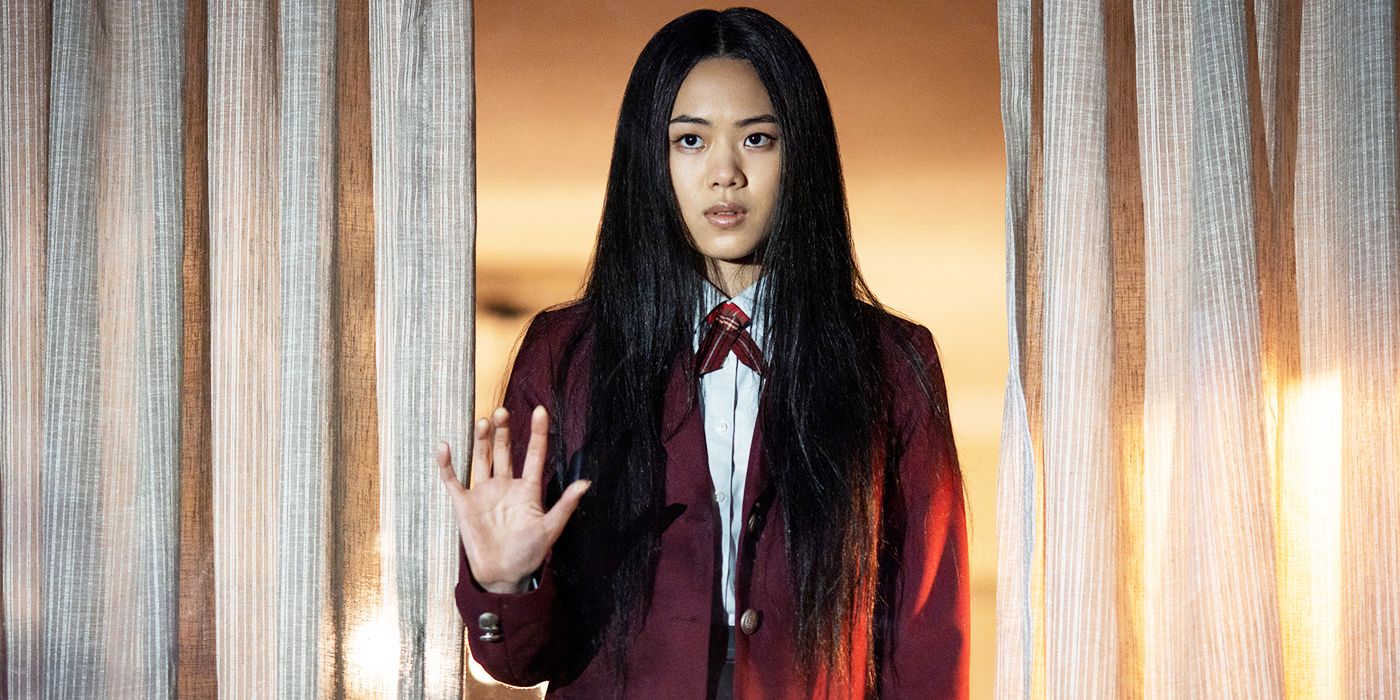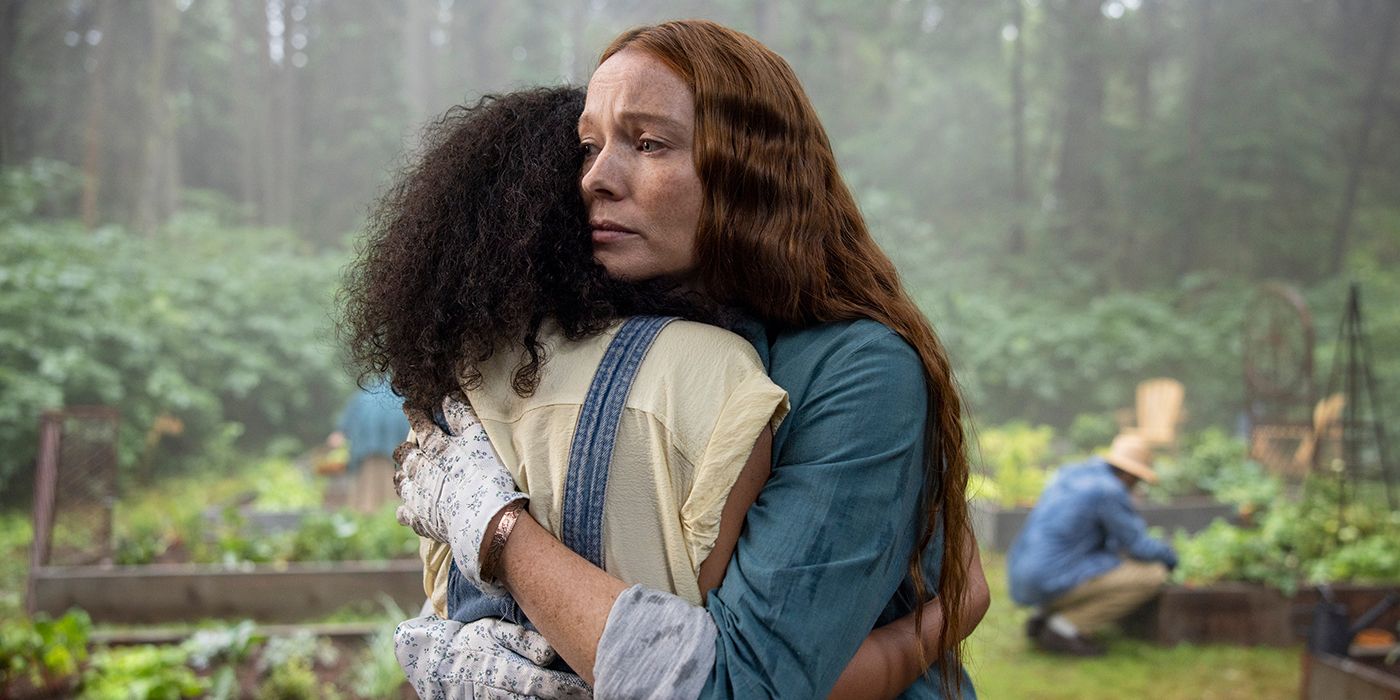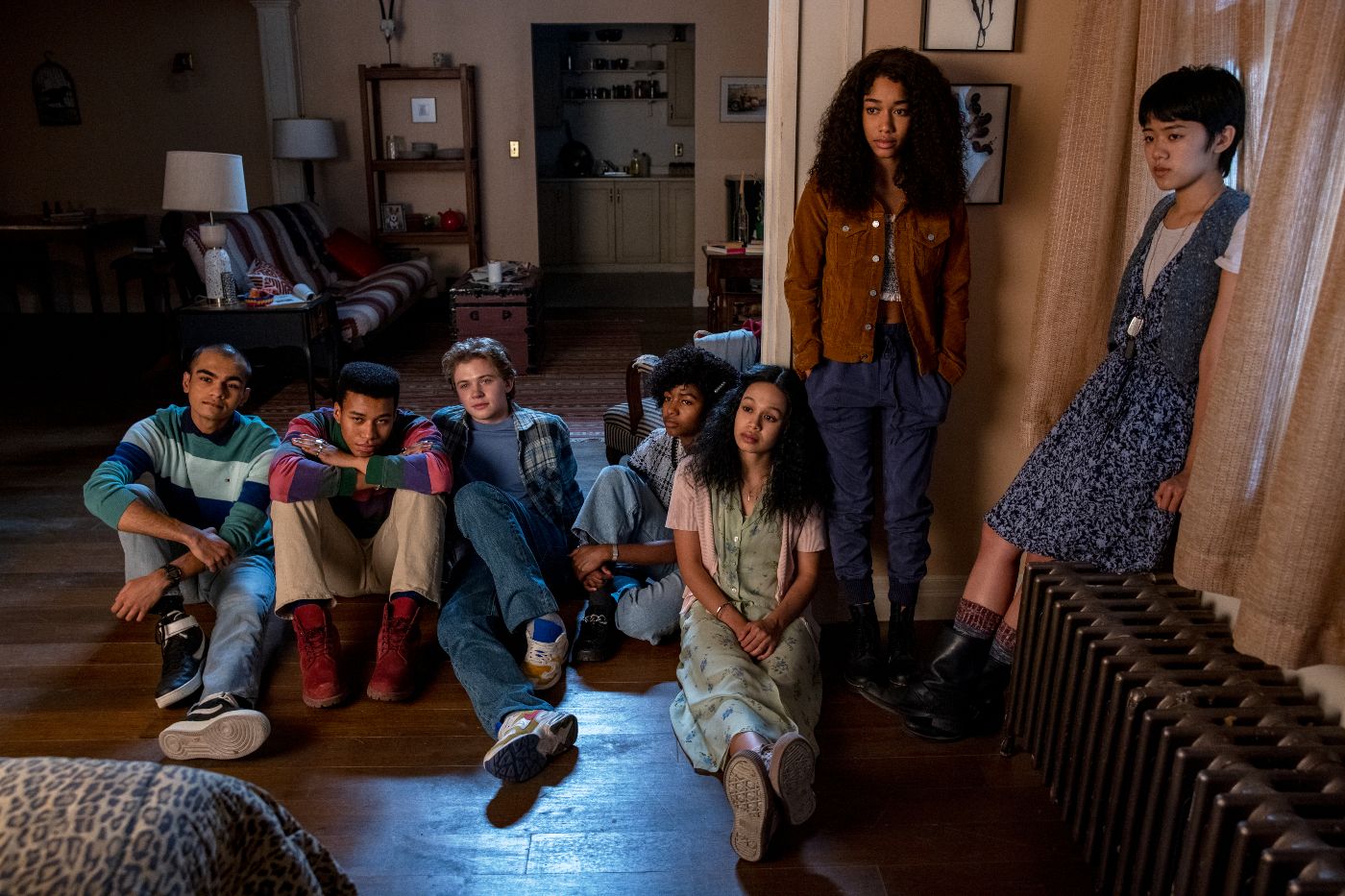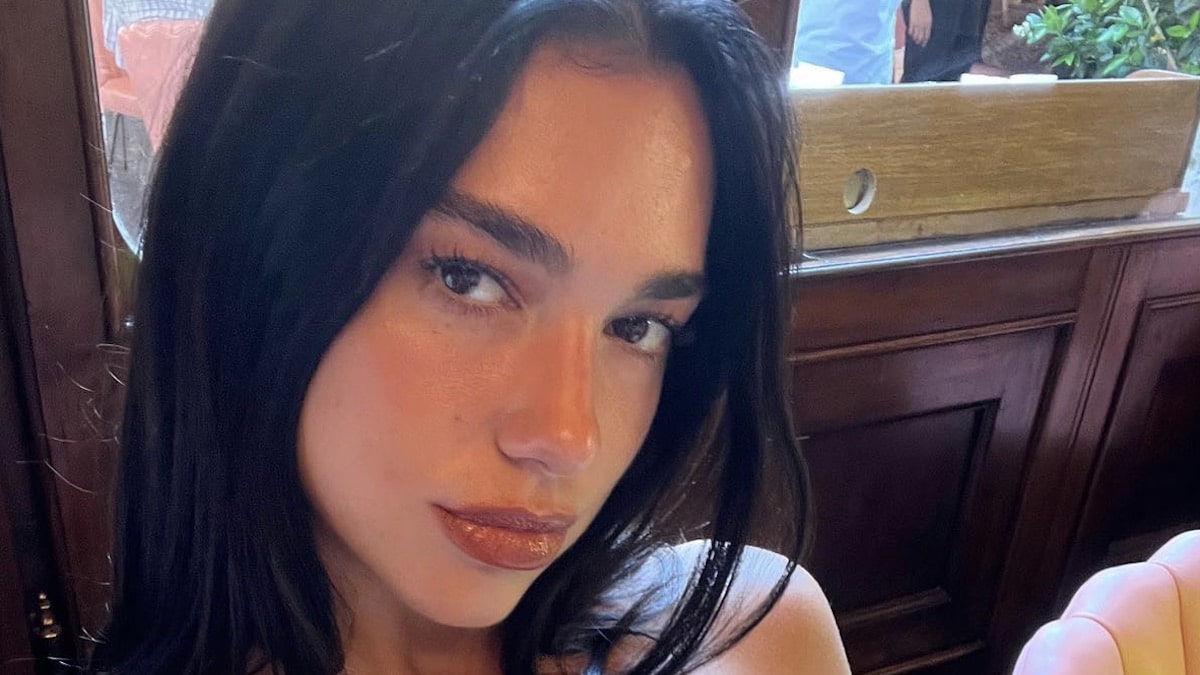Editor’s Note: The following contains spoilers from the Netflix series, The Midnight Club.
Mike Flanagan and Leah Fong’s The Midnight Club follows a group of terminal young adults spending the last months of their lives together at a hospice. As expected, the series dives deep into the effects a terminal diagnosis has on a person, especially when the patients are so young, with so much to live for. However, while questions of mortality, and morality, are at the center of The Midnight Club, the series is actually all about storytelling. To help them pass the time and deal with their very complicated issues, the patients of Brightcliffe gather around in the library every night, just as the clock marks midnight. There is a pact among the patients, through which they promise to send signs from the beyond when they die, but the Midnight Club is mostly about telling horror stories. And every night we join the Midnight Club, we realize these stories are the patients’ way of coping with a harsh reality.
When Ilonka (Iman Benson) first discovers the Midnight Club, she realizes together with the audience that the patients of Brightcliffe use storytelling to reinforce their bonds to each other. No wonder Anya (Ruth Codd) doesn’t want to invite Ilonka to the club, even if the new girl does tell great stories. While their declared goal is to share horror tales and try to scare each other, the Midnight Club is actually more concerned with keeping each other company and using horror stories as a front to share their deepest secrets with their friends.
It’s for that reason that Natsuki (Aya Furukawa) comes up with a story to confess she tried to kill herself. It’s also through a tale that Anya reveals her past as a drug addict. Even Kevin (Igby Rigney) uses a story to admit to himself that he’s not the good guy everyone thinks he is and that he’s actually tired of trying to please the people around him.
Stories that Serve a Purpose
The individual stories of The Midnight Club work so well because they are not just excuses for extending the series’ runtime but the ways each patient of Brightcliffe comes to terms with the errors of their past and their grim future. Stories are also used to show character growth, as when Sandra (Annarah Cymone) uses a classic noir tale to apologize to Spencer (Chris Sumpter) for the suffering her religion caused him once he revealed he was gay. There’s a complex conflict lying underneath a funny and sometimes goofy story, but the fact it’s all make-believe helps Sandra admit things she was too afraid to say out loud, such as how religion can be damaging and even her own actions can be fueled by prejudice.
In The Midnight Club, stories are also how the patients of Brightcliffe reaffirm their identity or reflect on who they really are. Spencer’s story, for example, is all about accepting that there’s nothing wrong with being gay. As for Amesh (Sauriyan Sapkota), he creates a fantasy where he can save the world, just like he always dreamed of doing. But his tale is also about surviving longer than fate wished you to, about tricking death to steal some more time among the living. Each story shared after the clock rings midnight is an exploration of the patients’ psyches, which increases the emotional stakes of each tale and allows every gathering of the Midnight Club to be meaningful. Even Cheri’s (Adia) silence has meaning, as her refusal to share ghost stories while she’s very comfortable lying through her teeth every day speaks of her feelings of abandonment and of the loneliness she’s not ready to face.
But even outside the club’s meetings, the series is all about stories and how they have the power to give us hope. It’s because of a story that Ilonka goes to Brightcliffe, chasing ghosts while hoping there is some magic in the place to save her. And because of the Paragon story, the whole club is willing to sacrifice their most precious possessions to save Anya, hoping to make a fairytale come true. Hope can be dangerous, though, and by believing too much in a story, Ilonka puts herself and others in danger after inviting Shasta (Samantha Sloya) to Brightcliffe in the middle of the night. And at the end of the season, Ilonka has to choose to let go of stories and accept her death; only then can she enjoy the rest of her life to its most. Stories can be gifts life gives us to find meaning, but they can also blur the truth and lead people into a dangerous path.
A Story of Storytelling
It’s curious to think about The Midnight Club as a story about storytelling, as the show gets a meta aspect that allows us to reflect on Flanagan’s overall work. Flanagan already explored how ghost stories are manifestations of our collective wish to think there’s more than oblivion awaiting us after death. That thought led to the creation of The Haunting of Hill House and The Haunting of Bly Manor. Bly Manor, specifically, is one big story told by a lover who’s not ready to let the woman she loves disappear forever. And Midnight Mass is a story Flanagan used to explore his own thoughts about the destructive power of religion, the beauty of faith, and how humans are so complex because we are perpetually afraid of dying. It’s fitting, then, that The Midnight Club focuses on storytelling itself, exposing how each of Flanagan’s productions is, at its core, about real human lives, regardless of all the supernatural elements they share.
Stories pervade our everyday life. We constantly retell anecdotes to loved ones, and friends forge together tales of their youth that will be forever remembered by all involved. Tales also define our faith, as great stories of the past can lead us to believe in God, souls, and life after death. Stories are more than just stories. They are tools we use daily to connect to other people, ourselves, and the world around us. And The Midnight Club does a beautiful job proving this by putting storytelling at the front stage.
The Midnight Club is available right now on Netflix. Check out the series trailer below:
























































![Key Metrics for Social Media Marketing [Infographic] Key Metrics for Social Media Marketing [Infographic]](https://www.socialmediatoday.com/imgproxy/nP1lliSbrTbUmhFV6RdAz9qJZFvsstq3IG6orLUMMls/g:ce/rs:fit:770:435/bG9jYWw6Ly8vZGl2ZWltYWdlL3NvY2lhbF9tZWRpYV9yb2lfaW5vZ3JhcGhpYzIucG5n.webp)


